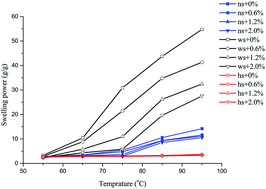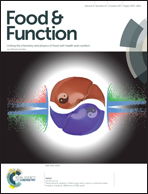The effect of salt concentration on swelling power, rheological properties and saltiness perception of waxy, normal and high amylose maize starch
Abstract
The effect of salt concentration on swelling power, rheological properties and saltiness perception of waxy, normal and high amylose maize starch was investigated. The swelling power decreased with increasing salt concentration from 0% to 2.0% among all starch samples. Waxy starch showed the highest swelling power at different salt levels, while high amylose starch showed the least swelling power. The salt addition increased the gelatinization temperature of waxy starch and normal starch from 71.3 °C to 77.1 °C and from 72.3 °C to 78.2 °C. Their storage modulus (G′), loss modulus (G′′), and viscosity values at lower salt concentration were greater than those at higher salt concentration. The increasing tan δ of waxy and normal starch against frequency sweep indicated liquid-like behavior, while high amylose starch exhibited decreasing tan δ indicating solid-like behavior as it was difficult to gelatinize. When sensory evaluation was conducted by trained panelists, it was found that high amylose starch displayed the highest initial saltiness and in-mouth saltiness intensity, accompanied by the greatest thickness, lubrication and stickiness, while waxy starch displayed the lowest values for saltiness perception and mouthfeel.


 Please wait while we load your content...
Please wait while we load your content...